Rane FMI 14 Bedienungsanleitung
Rane
Nicht kategorisiert
FMI 14
Lies die bedienungsanleitung für Rane FMI 14 (4 Seiten) kostenlos online; sie gehört zur Kategorie Nicht kategorisiert. Dieses Handbuch wurde von 9 Personen als hilfreich bewertet und erhielt im Schnitt 4.5 Sterne aus 5 Bewertungen. Hast du eine Frage zu Rane FMI 14 oder möchtest du andere Nutzer dieses Produkts befragen? Stelle eine Frage
Seite 1/4

OPERATING / SERVICE MANUAL FMI 14
MIXER INPUT
QUICK START
No one likes to read manuals. Most like to plug in and turn on. That’s usually OK, and with
only a very few exceptions, damage is unlikely to result from such procedures with the FMI 14.
First, determine if the input is to be microphone or line and set the MIC/LINE select switch
accordingly. If a microphone is to be used which requires phantom power, set the PHANTOM
POWER switch to its ON position. With the SENDS and MASTER levels all the way down, set
the PAD and GAIN controls so that the highest input will not illuminate the overload light. If
the SENDS are to be used, set the Aux Send selector switches to the desired position. Adjust
the A and B MASTER output levels to deliver the required amount of signal to the bus and
direct outputs.
NEVER CONNECT ANYTHING EXCEPT AN APPROVED RANE POWER SUPPLY
TO THE THING THAT LOOKS LIKE A TELEPHONE JACK ON THE REAR OF THE
FMI 14. This is an AC input and requires special attention if you do not have an operational
power supply EXACTLY like the one that was originally packed with your unit. See the full
explanation of the power supply requirements elsewhere in this manual.
SYSTEM CONNECTION
When connecting the FMI 14 to other components in
your system for the first time, leave the power supply for
last. This will give you a chance to make mistakes and
correct them before any damage is done to your fragile
speakers, ears and nerves.
INPUTS on the FMI 14 are balanced. This means that
standard 3-pin (XLR) connectors on the ends of any good
quality cable will work well with the FMI 14 and micro-
phones of your choosing. As with all Rane products, pin 2 is
used for “hot” or “+” signal polarity, pin 3 is “return” or “-”
and pin 1 is signal ground. If you are using the ¼" TRS line
input, tip is hot, ring is return and sleeve is ground. For
unbalanced inputs, drive pin 2 or tip as hot and pin 1 or
sleeve as ground. It is not necessary to short pin 3 or ring to
ground on Flex series microphone inputs. It will not hurt
anything, either. You may use either pin 1 or case for shield
ground on the 3-pin input. (See Rane Note 110 for further
information on this subject).
OUTPUTS. The FMI 14’s Master outputs are balanced.
The Aux outputs are unbalanced. On the balanced outputs,
tip is hot, ring is return and sleeve is ground. If unbalanced
output is required, use only a tip-ring-sleeve connector and
leave the ring unterminated. A “mono” type ¼" (tip and
sleeve only) connector may be used on the Aux outputs.
They are unbalanced only and require no special attention.
Again, have a look at Rane Note 110 for more detail.
BUS OUTPUTS. The 7-pin DIN Bus input and output
may be used only with other Flex modules. These are not
MIDI inputs and outputs. A
detailed explanation of the wiring
in these connectors is not neces-
sary. The only thing the user must
know is that only a DIN cable as
supplied with each module from
the factory should be used. If, for
some reason, there is not a cable in
the box with your FMI 14, you
should contact Rane for a replace-
ment. If you are in a bind and need
to make one, a 5-pin DIN may be
used instead of a 7-pin. The two
outside pins are not used on the
FMI 14 and have been included
due to possible future compatibility
requirements. All pins should be
wired “straight through” (1 to 1, 2
to 2, etc.).
A typical FLEX system using FMI 14s would be one
where several FMI 14s are used as input channels for a
mixer with one FMM 42 Master module as the termination.
In a case like this, the first FMI 14’s BUS OUT would go to
the second’s BUS IN, its BUS OUT to the third’s BUS IN,
and so on down the line. The last FMI 14’s BUS OUT would
connect to the FMM 42’s BUS IN. This would sum all FMI
14s properly. See the Flex User’s Guide for additional
details.

FRONT PANEL DESCRIPTION
1. MIC / LINE SELECT SWITCH. A pushbutton switch which in its out position
determines that the 3-pin MIC INPUT on the rear will be active and structures the input
gain accordingly. In the in position the balanced ¼" LINE INPUT is active and gain is
reduced to suit.
2. 48V PHANTOM POWER SWITCH. In the “on” position, 48 volts D.C. phantom
power is applied to pins 2 and 3 of the 3-pin MIC INPUT connector.
3. INPUT GAIN CONTROL. This rotary control increases input GAIN as it is rotated
clockwise. Its range is from 20dB at full CCW rotation to 60dB at full CW rotation.
4. 20dB PAD SWITCH. In its 20dB postion, this switch decreases the gain range of
the input GAIN control (item #3, above). by 20dB, which is times ten. If it is set to its
NORM position, the calibrations indicated above are true.
5. CHANNEL OVERLOAD INDICATOR. This red LED illuminates any time any
signal level is within 4dB of clipping. Five key locations are monitored.
6. HIGH FREQUENCY EQ CONTROL. This rotary control determines the amount
of boost or cut applied to the FMI 14’s passband by its Accelerated Slope™ high frequency
filter. The center detent, cleverly placed at the center of rotation of this control, provides a
ground for the filter which bypasses it. Rotating this knob clockwise increases the gain of
the of the mixer above 7kHz in a shelving fashion to a maximum of +12dB; CCW from
center decreases the gain to a minimum of -15dB.
7. MIDRANGE EQ CONTROL. As above, clockwise rotation increases gain, how-
ever in this instance we have a bandpass type curve as opposed to a shelving characteristic.
Again, the range is from -15dB to +12dB.
8. MIDRANGE BANDWIDTH SELECTOR. This three-position switch allows the
user to select 1/3, 1 or 2 octave coverage from the midrange filter.
9. MIDRANGE CENTER FREQUENCY CONTROL. A rotary control which
determines the center frequency of the midrange filter. Its range is from 95Hz to 4kHz.
10. LOW FREQUENCY EQ CONTROL. This rotary control determines the amount
of boost or cut applied to the FMI 14’s passband by its Accelerated Slope
™
low frequency
filter. The center detent provides a ground for the filter which bypasses it. Rotating this
knob clockwise increases the gain of the mixer below 100Hz to a maximum of +12dB in a shelving fashion; CCW from
center decreases the gain to a minimum of -15dB.
11. EQUALIZER DEFEAT SWITCH. In its out position, all audio is routed around the equalizer section defeating its
action. Only when it is pressed in will any of the equalizer controls be active.
12. AUX SEND SELECTOR SWITCHES. These switches determine the source for the Auxiliary Outputs, A and B. In
the PST FD position, the respective Aux Out is picked up after the Master level controls. In the PRE FD position, the source
is after the EQ, if engaged, but prior to the Master levels. If PRE EQ is used, the signal is obtained before the EQ section.
13. AUX A / B SEND CONTROLS. These rotary controls determine the output level to both the direct ¼" AUX OUT-
PUTS on the rear as well as the Aux sends in the BUS OUT connector.
14. MASTER A / B LEVEL CONTROLS. These concentric rotary controls determine the output level to both the direct
¼" MASTER OUTPUTS on the rear as well as the Master outputs in the BUS OUT connector. Rotated together, they act as
a conventional level control. Rotated individually, they create a pan function.
15. POWER INDICATOR LED. This yellow LED illuminates any time an approved Rane AC remote power supply
such as an RS 1 (included), RAP 10, VC 18 or an FRS 8 is connected to the unit and is active.

RE PAR ANEL DES PTIONCRI
1. 3-P M PUT CO ECTOR.IN IC IN NN Pin 2 is s ve, pin 3 is neg ve a pin 1 ispo iti ati nd
si .gnal ground
2 ¼" L E PUT CO ECTOR.. IN IN NN This ¼" TRS c or is used for c aonnect onn ngecti
LINE v I T to the I . p is (+), ri is a s ve is .le el NPU FM 14 Ti ng (-) nd lee ground
3. ¼" SERT CO ECTOR.IN NN This ¼" TRS c is to be used to c tonn orect onnec
ex rn pro i , such as e s a e rs to the i t s of the I . Thete al cess ng ffect nd qualize npu ection FM 14
ti et lee ctp is se , the ri is rnd ng urn nd a the s ve is . F wa thi i ground or rd- nk ng produ s such as
the Rane
FPE 13
a E e rs have TRS ks th th dir y c tond FM 15 qualize jac on em at ectl onnect
this p h i t w h a s reo b wired p to p, ri to ri , a s ve to s ve. Seeatc npu it te ca le ti ti ng ng nd lee lee
the block d the I d sh ex lo this insert.ia amgr on FM 14 ata eet for act cation of
4. F X BUS IN.LE This c is in ed to be used to c the F X BUSonn orect tend onnect LE
OU FMT a ther Rane F x to the of no le unit I . S the sys c s r14 ee tem onn onecti ection fo
d s.etail
5. F X BUS OUT.LE This c is in ed to be used to c the I toonn orect tend onnect FM 14
a ther p Rane F xno iece of le
e iqu
p nt. A other use w id the wa anty first-me ny ill vo rr on your
born ch d.il
N E: al c may be c stru d wh h wOT Speci ab ngli on cte ic ould a ow thell
Bus ts Out ts to be used for dir i ts t ts.Inpu and pu ect npu and ou pu
S the F er’s Guide for l info a .ee lex Us add onaiti rm tion
6 X A / B OUTPUTS.. AU These are n d dir Out ts. These Out tsunbala ce ect AUX pu pu
c n ly lo r . This ns th a A r the s i t w t beontai on cal mate ial mea at ny ux mate ial on Bu npu ill no
pr pu 14 gr foresent these Outat ts. S the I ee FM d sh block data eet ia am d s.etail
7. MAS R A B OUTPUTE /
TS. These are b nala ce
d ¼" t ts. p is (+), ri is )ou pu Ti ng (-
a s ve is .nd lee ground
8. GRO LIFT SWITCH.UND This h ides the ab y to separ cha isswitc prov ilit ate ss
ground nd gn ground or hou po on In a si al . N mall itcy, this sw h s ld be in the LIFT siti . some
ci ta ce it ma ece it ite iti elimi atercums n s y be n ssa to m e ry ov to the soppo spo on to n st nubbor
hu nd bu prob xp on of oum a zz lem We ealize cie ti ics. r a s n f e la atin this h wswitc ld be
h l, t y s n es t s to have much to w h .elpfu unfor unatel cie ce do n’eem do it it
If you ry ov ng your po are p d to ttem te m i this h w h switc it wer p f rs tam li ie
urn oned
or
t ed , urn up don't be. ways turn y r amp r s wn b ore c i y r gr sAl ou lifie level do ef hang ng ou ound
ar doun a then i th slowly. Put a sp ker re-c er t w t ay!nd br ng em up ea on ou of ork od
9. REMO POWER SU LY PUT. TE PP IN The I is s d m the f w h a M RS 1 R o PowerFM 14 upplie fro actory it odel em te
S ly su b c to this i t k. The wer re ir nts the I an AC n r-upp ita le for onn onecti npu jac po qu eme of FM 14 call for 18-24 volt ce te
ta mepp fored trans r ly. on This is t a DC i t. It is t a no npu no tele ckphone ja .
N r e a er w h yo F other than teve us pow supply it ur MI 14
he one supp
lie ct ceme ved or an exa repla nt tained or roob app d
by ne r ra on.Ra Co po ti i a other t e s ly y d ge the a id the wa anty. Two y rs parts a rUs ng ny yp of upp ma ama unit nd vo rr ea nd labo
is w th safe a i , t thi ?or gu rd ng don’you nk
10. GRO CO ECTOR.UND NN Sin the I is wered m a r o AC wer s ly wh h es cha isce FM 14 po fro em te po upp ic do carry ss
ground hrough ground ng of ord prov your do no no t to the i pin the AC c , this screw has b n ee ided in se ca sys tem es t have a ther
ea mea ac ail etcrth i ground ng ns such as t rhrough k r s, . Its use disuse sor
hould be d rete mi
ned sp f a .by your eci ic pp onlicati
Produktspezifikationen
| Marke: | Rane |
| Kategorie: | Nicht kategorisiert |
| Modell: | FMI 14 |
Brauchst du Hilfe?
Wenn Sie Hilfe mit Rane FMI 14 benötigen, stellen Sie unten eine Frage und andere Benutzer werden Ihnen antworten
Bedienungsanleitung Nicht kategorisiert Rane
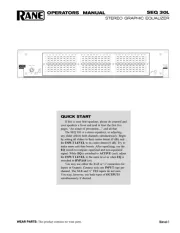
7 Juli 2025
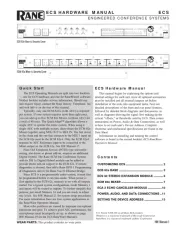
7 Juli 2025
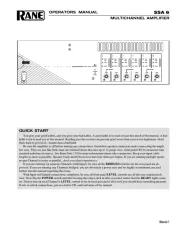
7 Juli 2025
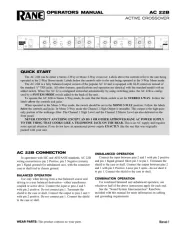
6 Juli 2025
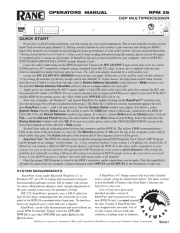
6 Juli 2025
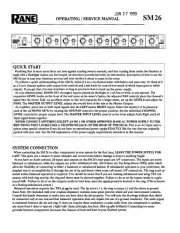
6 Juli 2025
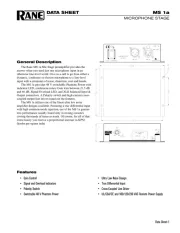
6 Juli 2025
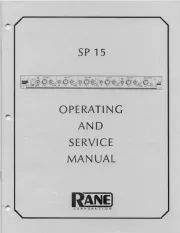
6 Juli 2025
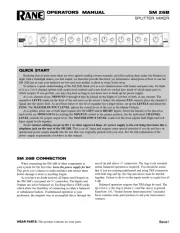
6 Juli 2025
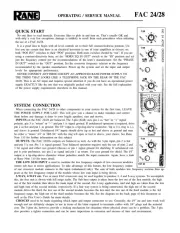
6 Juli 2025
Bedienungsanleitung Nicht kategorisiert
- Powersoft
- Azden
- Hexinverter Electronique
- Kanto
- Hikvision
- Soul
- Xmusic
- Motorola
- InFocus
- Sylvania
- BrightSign
- ILive
- Gitzo
- Kitchen Brains
- PoolSkim
Neueste Bedienungsanleitung für -Kategorien-

20 August 2025

20 August 2025

20 August 2025
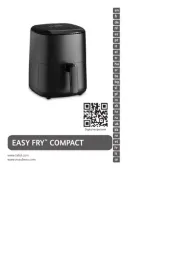
20 August 2025

20 August 2025
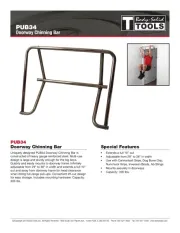
20 August 2025

20 August 2025

20 August 2025
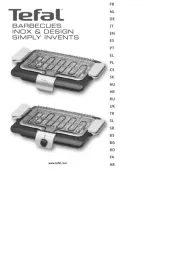
20 August 2025
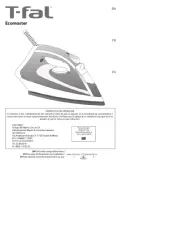
20 August 2025